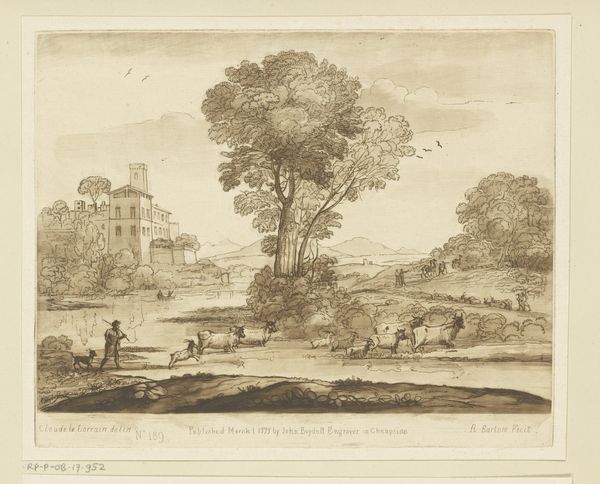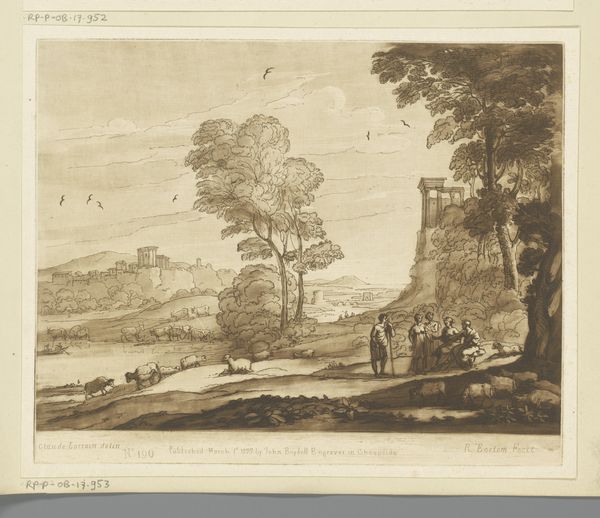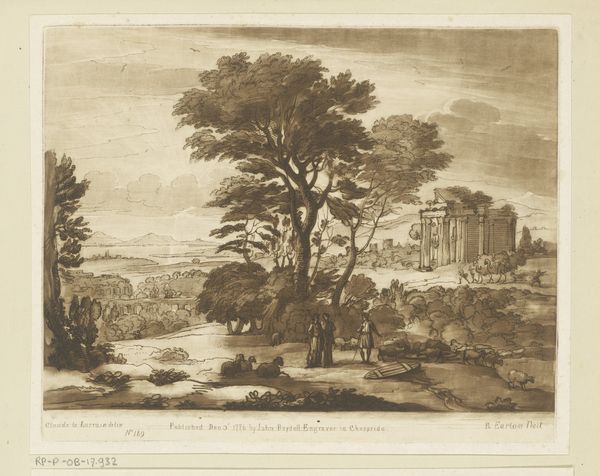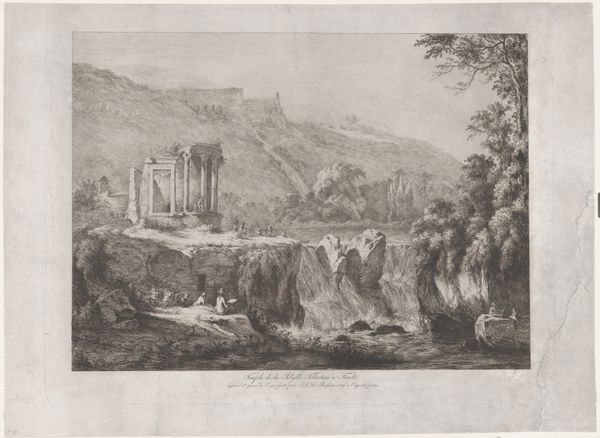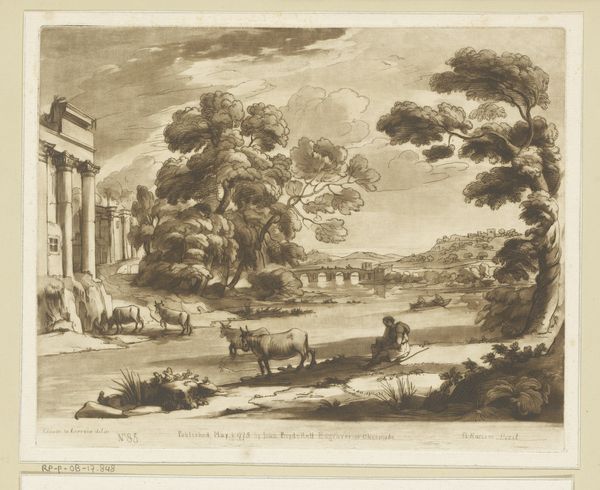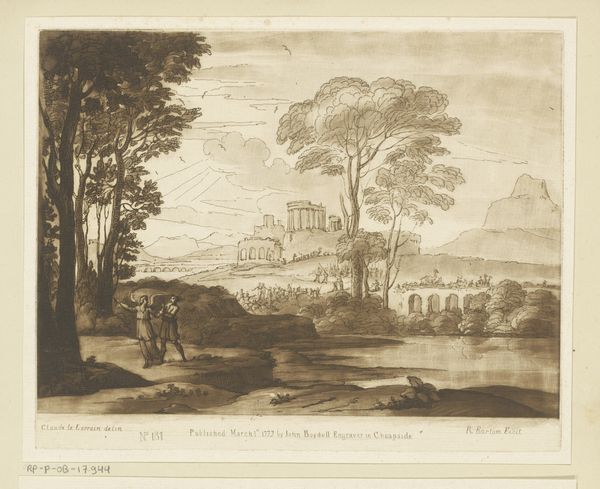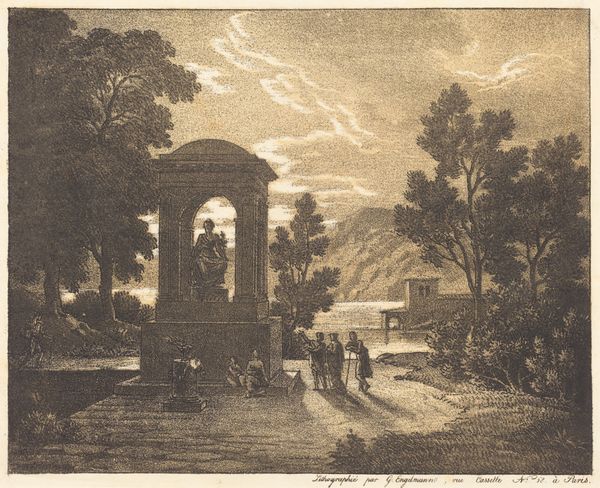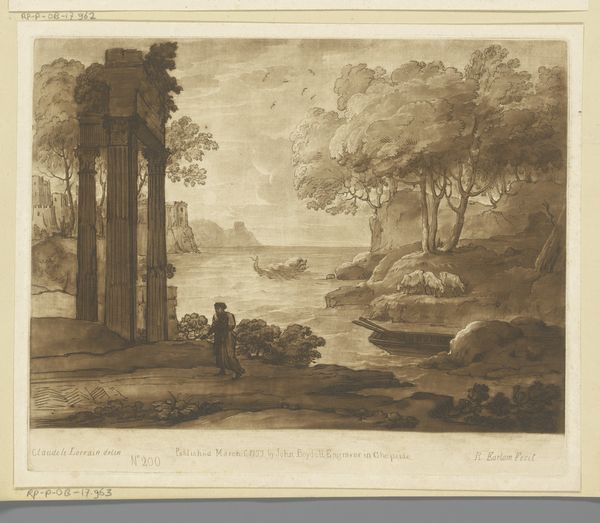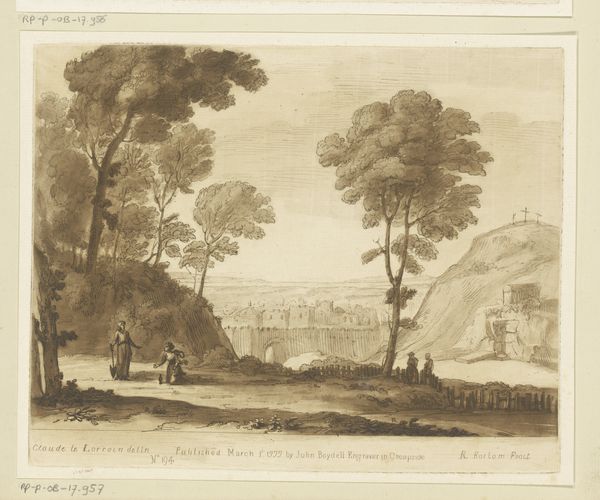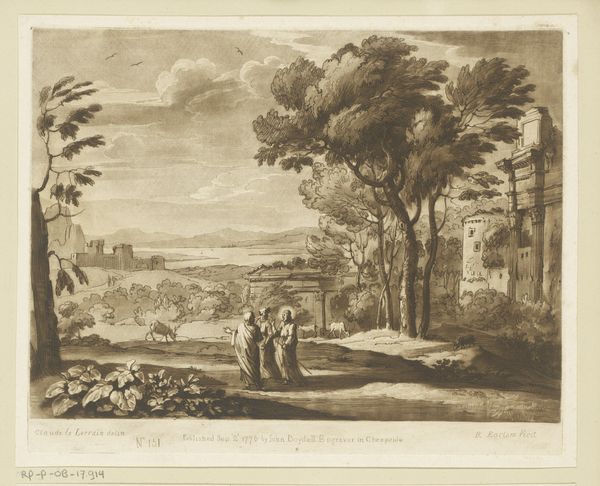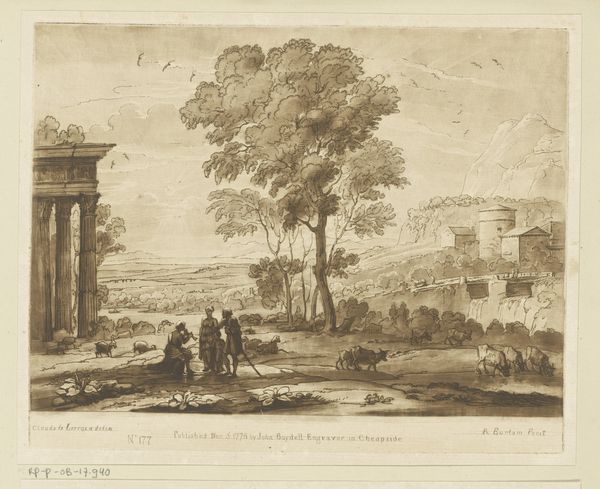
Dumblain Abbey, Scotland (Liber Studiorum, part XI, plate 56) 1816
0:00
0:00
drawing, print, etching, pencil
#
drawing
# print
#
etching
#
landscape
#
pencil drawing
#
romanticism
#
pencil
#
19th century
#
history-painting
Dimensions: plate: 7 7/16 x 10 9/16 in. (18.9 x 26.8 cm) sheet: 8 1/4 x 11 1/2 in. (21 x 29.2 cm)
Copyright: Public Domain
Curator: J.M.W. Turner's print, "Dumblain Abbey, Scotland," created in 1816, is an etching employing pencil and brown ink on paper. Part of his 'Liber Studiorum', it's now housed at the Metropolitan Museum of Art. My immediate impression is that the muted color palette establishes a rather melancholy mood. Editor: The scene's structure contributes greatly to that sense of subdued reflection. The asymmetrical positioning of the ruined abbey at the top left pulls your eye upwards, then downwards through the dense foliage, leading to the figures on the riverbank in the lower left quadrant and continuing toward the distant water passage to the lower right—effectively mapping a narrative from decay to present life. Curator: Absolutely. And it’s key to note Turner's recurrent preoccupation with ruins and their inherent symbolism. The abbey stands as a potent visual representation of mortality, reflecting on history, religion, and societal decline over time. The scene suggests not just physical ruin but the ruins of former beliefs or systems. Note, too, the relatively small scale of the humans; what stories can they tell? What might they represent in contrast with the weight of history signified in the structure above? Editor: A good observation. I think we could add something about his technique. The use of line and wash creates a atmospheric perspective, doesn't it? It certainly softens the overall image and gives depth. The foreground is rendered with sharper detail, and gradually blends into softer and suggestive lines in the background; This enhances the viewer’s feeling of distance. Curator: Precisely. Turner captures a poignant awareness of temporality. While the architectural edifice crumbles, life—symbolized by the bathing figures near the river—continues, an element echoed and re-emphasized in that small river or passage in the distance as if it might lead elsewhere. These figures by the riverside add another dimension – a kind of social commentary? They appear almost oblivious to the looming monument behind them. Editor: A poignant paradox. Artistically, there’s this duality: careful composition married with loose rendering that gives a ghostly ethereal feel. Perhaps the symbolism runs deeper, perhaps our own understanding is just an imaginative fiction applied many years later? Curator: Or perhaps, that potential for various imaginative interpretations is what continues to give this picture its resonating power after all these years. Editor: A final, insightful perspective to consider indeed.
Comments
No comments
Be the first to comment and join the conversation on the ultimate creative platform.
